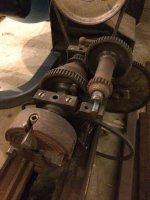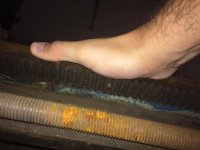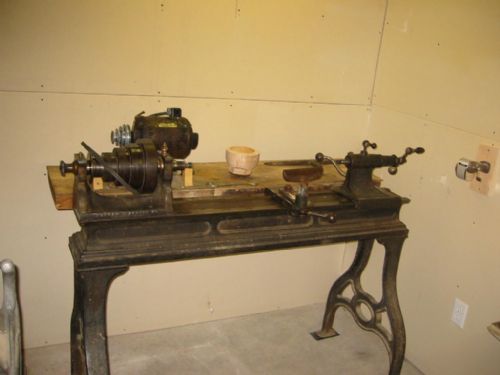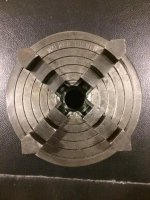Stormbringer MM
Aluminum
- Joined
- Oct 30, 2016
Greetings Everyone,
I recently purchased an old lathe from a shop in Saint John, New Brunswick Canada. After about 4 weeks of perusing this forum, lathes.co.uk and hours dedicated to google image searches I can only come up with theories on to its origin. I am not sure if it's a lathe that may have been assembled through the use of multiple parts (eg, the chuck is an old Walker-Turner but im quite sure the rest of the lathe has no business with Walker-Turner or any of its affiliates from back in the day).
***Updated thanks to a user comment***
Dimensions approximately 42" long by 12" wide (at max width including gears)
****End update***
This might have been an old treadle lathe converted to electric as it did come with an electric motor but I can only find similar designs on treadle lathes or early micro lathes. For example the legs look like something from "The leader" found here: http://www.practicalmachinist.com/vb/antique-machinery-and-history/small-antique-lathe-id-288809/ (image 1, the leg's are "M" shaped).
The bed seems to be something more like this very old Star Tools lathe - notice the similar design here: http://www.blacksmithandmachineshop...off-the-trailer-gearing-ornate-to-the-end.jpg
Anyways I'm at a loss, so I need to ask this great community for some help. I've reached out to tony from lathes.co.uk but dont really expect him to reply, im sure he's insanely busy - thanks in advance.
I recently purchased an old lathe from a shop in Saint John, New Brunswick Canada. After about 4 weeks of perusing this forum, lathes.co.uk and hours dedicated to google image searches I can only come up with theories on to its origin. I am not sure if it's a lathe that may have been assembled through the use of multiple parts (eg, the chuck is an old Walker-Turner but im quite sure the rest of the lathe has no business with Walker-Turner or any of its affiliates from back in the day).
***Updated thanks to a user comment***
Dimensions approximately 42" long by 12" wide (at max width including gears)
****End update***
This might have been an old treadle lathe converted to electric as it did come with an electric motor but I can only find similar designs on treadle lathes or early micro lathes. For example the legs look like something from "The leader" found here: http://www.practicalmachinist.com/vb/antique-machinery-and-history/small-antique-lathe-id-288809/ (image 1, the leg's are "M" shaped).
The bed seems to be something more like this very old Star Tools lathe - notice the similar design here: http://www.blacksmithandmachineshop...off-the-trailer-gearing-ornate-to-the-end.jpg
Anyways I'm at a loss, so I need to ask this great community for some help. I've reached out to tony from lathes.co.uk but dont really expect him to reply, im sure he's insanely busy - thanks in advance.
Attachments
Last edited:















